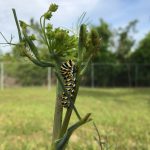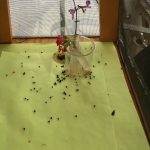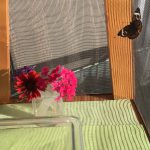Working from home has given me the opportunity to take more notice of my landscape and allow more time for insect scouting. While looking for turfgrass pests a few weeks ago, I noticed a caterpillar I didn’t recognize feeding on a broadleaf weed in my lawn. Since it didn’t appear to be a typical turfgrass pest, I decided to collect a few and try to figure out what they were. I’m glad I did because it turned out they were Buckeye Butterfly larvae! This random find has led me to some experimentation with raising butterflies and I thought I’d share some tips in case others might like to try it.
**Before collecting be sure to consult the U.S. Fish and Wildlife list of endangered and threatened species in Florida and never collect from Florida State Parks or other dedicated conservation areas. Never release species not native to our ecosystem. **
You will need an adequate enclosure to keep caterpillars, chrysalises, and newly emerged butterflies/moths. I am fortunate to have a beautiful handmade cage constructed by a Master Gardener Volunteer at my disposal. It has a wooden frame and floor, screened walls, and the door latches. There are many options available for online purchase, but I would recommend getting one listed as “tall” or having a minimum height of 24 inches. Also, be sure you will be able to clean it easily – growing caterpillars create a lot of frass (excrement) that needs to be cleaned daily. I line the bottom of my enclosure with paper for quick cleanup.
Be sure you can offer fresh food for caterpillars and butterflies. Caterpillars usually have a limited menu of what they can eat depending on species. If you find them actively feeding on a plant, that is a pretty good sign that it is a good larval food source. Once you identify the caterpillar you can look up alternate larval host plants that the species eats.
Collecting foliage and keeping it hydrated can be a challenge. I use small floral water tubes. They have rubber lids that pop on and off with slits where I can insert small stems, but the insects do not get in and drown. I usually set these in another container to keep them upright. I can easily add fresh flowers when I expect a butterfly to emerge so that nectar is available. If your enclosure is large enough you may be able to keep small potted plants inside, just remember to keep them watered.
Where do the caterpillars come from? I intentionally plant several plants that are larval butterfly (caterpillar) hosts such as parsley, fennel, and passionflower vine. I check these plants for caterpillars that I can collect along with foliage. After the butterflies emerge, I release them into my yard so they can find a mate and keep the cycle going.
For more information on attracting butterflies to your landscape see Butterfly Gardening in Florida.
-
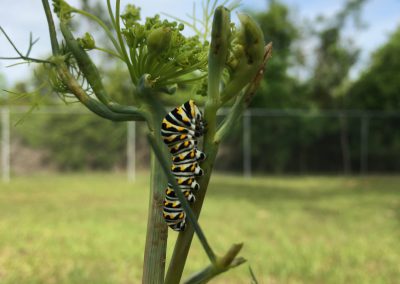
Eastern black swallowtail caterpillar on fennel. Photo: J_McConnell, UFIFAS
-
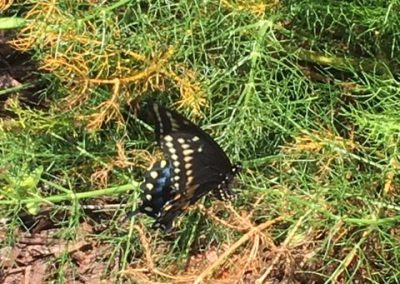
Black swallowtail on fennel
-
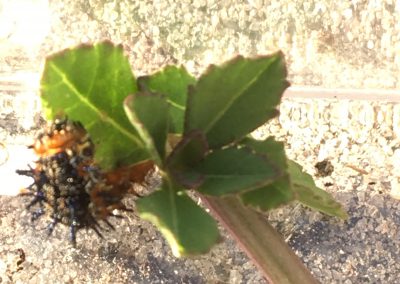
Common Buckeye Butterfly caterpillar feeding on frog fruit. Photo: J_McConnell, UFIFAS
-
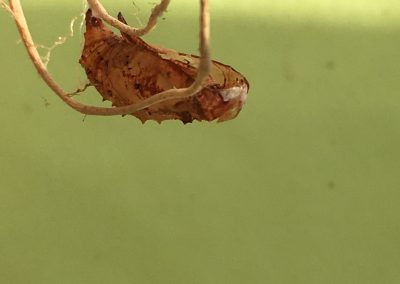
Buckeye chrysalis
-
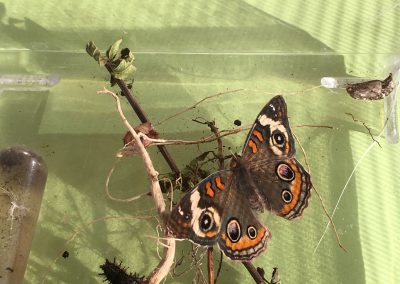
-
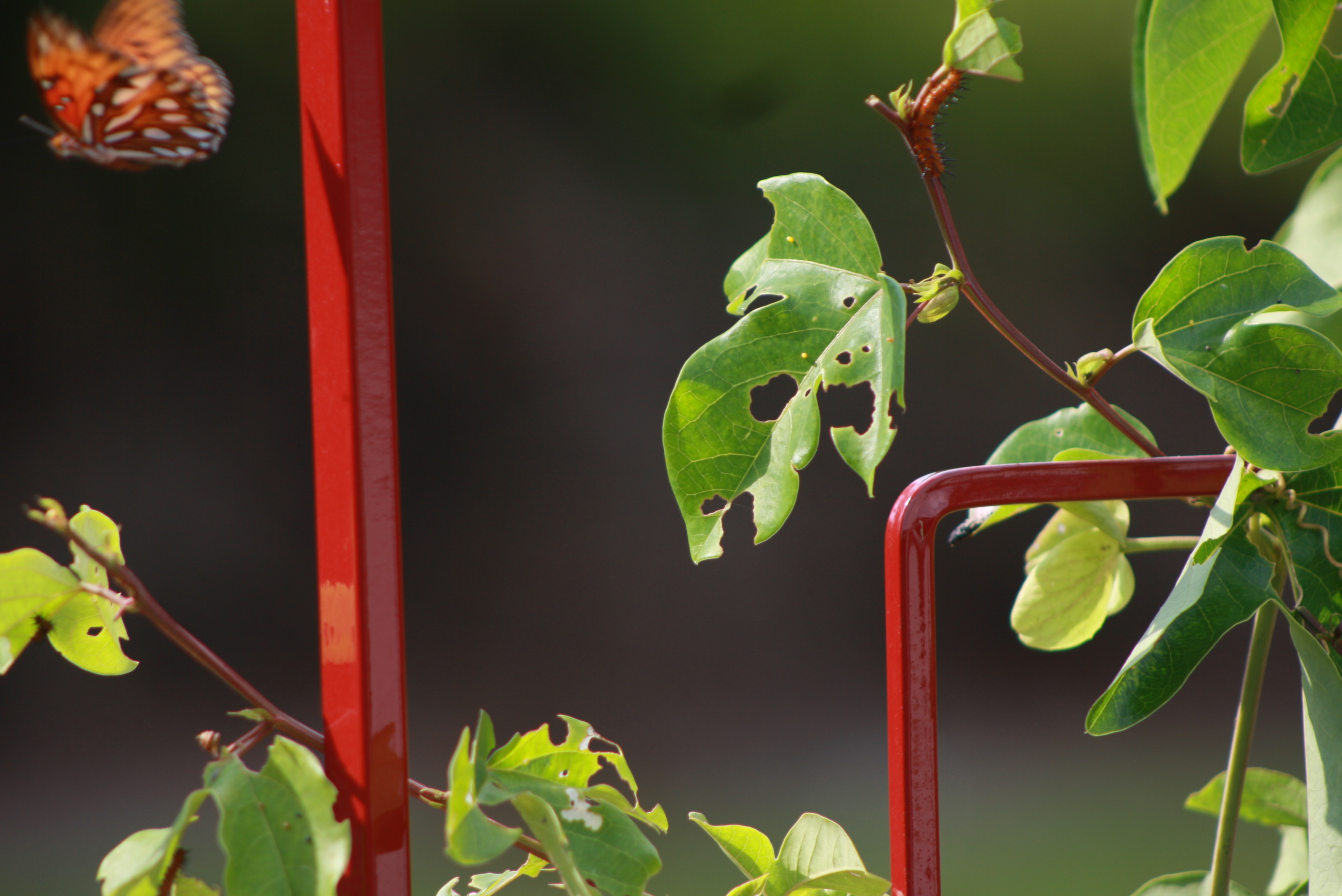
Passionflower vine was just visited by adult Gulf fritillary (leaving frame on left). To the right you see a caterpillar on a stem and small yellow eggs on the leaf surface. JMcConnell, UF/IFAS
-
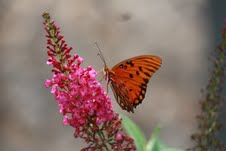
Gulf fritillary on butterfly bush
-
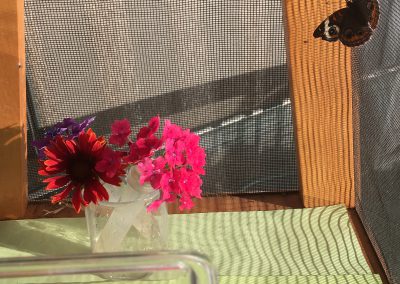
Provide a variety of fresh flowers when butterfly emergence is expected. Photo: J_McConnell, UFIFAS
-
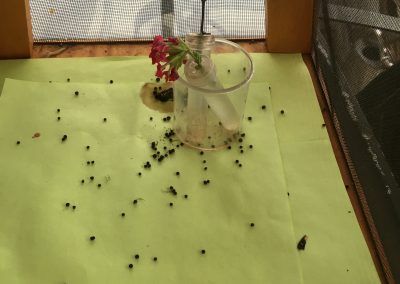
Lining the bottom of your enclosure with paper makes cleanup easier. Photo: J_McConnell, UFIFAS
- 2024 Gardening in the Panhandle LIVE! Palm Selection and Care - March 14, 2024
- Local Youth Invited to Participate in Junior Jubilee Watermelon Contest! - March 11, 2024
- Rainfall Revives Resurrection Fern - February 8, 2024

